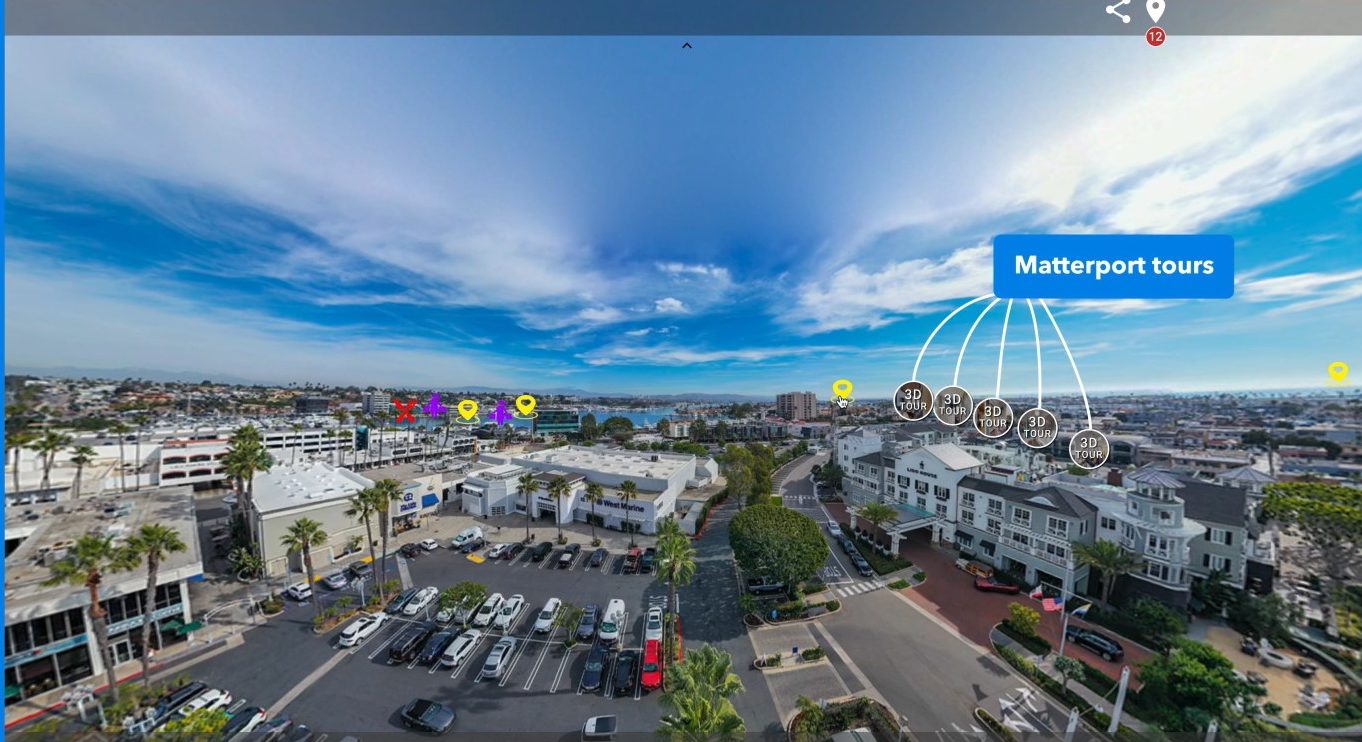how does a 360 camera work
How Does a 360 Camera Work? A Complete Guide for Photographers and Real Estate Agents
The world of photography and virtual tours is evolving fast. **360 cameras** are leading the charge. These powerful devices let you capture everything around you in a single shot. They offer immersive experiences that traditional cameras simply can’t match.
Whether you’re a **photographer** looking to explore new creative angles or a **real estate agent** aiming to impress clients with virtual walkthroughs, understanding how a 360 camera works is key. In this guide, we’ll break it all down—from the basic principles to technical components and real-world applications.
If you’re ready to showcase your 360 content, platforms like www.threesixty.tours make it easy to host, customize, and share your virtual tours with the world.
II. Basic Principles of 360 Photography
At its heart, **360 photography** is about immersion. The goal is to replicate the feeling of standing in a space and being able to look in every direction.
What Does “360 Degrees” Mean?
When we say “360 degrees,” we’re usually talking about the horizontal view—everything in a full circle around the camera. However, to create a truly immersive image, you also need vertical coverage—from the ground (**nadir**) to the sky (**zenith**). That’s why most 360 images are actually spherical.
These images are often displayed using an **equirectangular projection**. It’s a flat version of a spherical image, much like how a world map flattens the globe.
Standard vs. 360-Degree Images
- With a **regular photo**, you have a fixed frame. You can’t look behind the camera or see what’s above or below.
- With a **360 image**, the viewer can pan, tilt, and zoom to explore the entire scene.
This makes 360 photography perfect for **virtual tours**. Instead of clicking through a gallery, users can explore a room or location naturally—just like they would in real life.
How 360 Cameras Capture the Whole Scene
Most 360 cameras use two or more **ultra-wide-angle lenses**, typically fisheye lenses, placed back-to-back. Each lens captures about 180 degrees. When combined, they form a complete sphere.
The key here is **stitching**. The camera or software aligns and blends the images from each lens into one seamless view. We’ll cover that in more detail later, but for now, just know that stitching is what turns multiple images into one immersive experience.
III. Components of a 360 Camera
To understand how a 360 camera works, let’s break down its main parts: **lenses**, **sensors**, and the **processing unit**.
A. Lenses
The most noticeable feature of a 360 camera is its **ultra-wide-angle lenses**. Most consumer models have two fisheye lenses, each capturing 180 degrees.
Fisheye lenses are great for this job because they can capture a wide field of view with just one lens. They do introduce distortion, but that’s corrected during the stitching process.
Some high-end cameras use more than two lenses. This can improve image quality, reduce stitching errors, and provide more control over exposure and focus.
B. Sensors
Behind each lens is a sensor that captures the image. The quality of these sensors significantly impacts your final photo or video.
Here are a few key sensor features:
- Resolution: Higher resolution means more detail. This is especially important for real estate virtual tours, where clarity matters.
- Dynamic Range: A good dynamic range helps capture both bright and dark areas without losing detail.
- Field of View (FOV): The sensor’s FOV needs to match the lens to ensure full coverage and clean stitching.
Some 360 cameras also use dual sensors per lens to capture depth. This is useful for creating **3D or VR content**.
C. Processing Unit
The processing unit is the brain of the camera. It handles several important tasks:
- Stitching images together
- Reducing noise in low-light shots
- Balancing color and exposure
- Providing a real-time preview on your phone or screen
Advanced models can even stitch images in real-time and support live streaming in 360. That’s a big plus for real estate agents offering live virtual tours via www.threesixty.tours.
IV. Image Stitching and Processing
**Stitching** is where the magic happens. It’s the process of combining images from multiple lenses into one seamless, spherical photo or video.
What Is Image Stitching?
Each lens captures a wide-angle image. These images overlap slightly. Stitching software aligns these overlapping areas and blends them into one continuous view.
Done right, the seams are invisible. Done wrong, you get ghosting, double images, or visible lines where the images meet.
Common Stitching Challenges
Stitching isn’t always easy. Here are a few common issues:
- Alignment Problems: If the lenses aren’t perfectly calibrated, the images won’t line up.
- Exposure Differences: If one lens captures a brighter area than the other, the seam can look unnatural.
- Motion Artifacts: Moving objects can appear warped or split if they cross the stitching line.
How Software Helps
Modern 360 cameras use advanced algorithms to fix these problems. Some even use artificial intelligence to detect and correct stitching errors automatically.
Editing apps often include:
- Auto-stitching for quick results
- Manual controls for fine-tuning
- AI tools for object removal and image enhancement
When you’re creating a virtual tour on www.threesixty.tours, high-quality stitching ensures your viewers stay engaged. Poor stitching can break immersion and make your content look unprofessional.
V. Applications and Benefits of 360 Cameras
**360 cameras** are more than just cool gadgets. They offer real value across multiple industries.
A. Real-World Uses
- Real Estate: Virtual tours let buyers explore properties remotely. This saves time and widens your reach. Learn more about how 360 tours are transforming real estate at this Forbes article on virtual real estate marketing.
- Travel and Events: Travel bloggers use 360 cameras to capture destinations in a way that feels real. Event planners can share immersive recaps of concerts, weddings, and more.
- Architecture and Construction: Teams use 360 imagery to document progress, conduct virtual inspections, and collaborate remotely.
- Virtual Reality (VR): 360 cameras are essential for creating VR content. Whether it’s for education, training, or gaming, these cameras make it possible.
B. Why Choose 360 Over Traditional Cameras?
- Immersive Experience: Let your audience look around naturally. It’s the next best thing to being there.
- Higher Engagement: Studies show that 360 content keeps viewers engaged longer. That’s a big win for marketers and real estate agents.
- Better Storytelling: A single 360 image can show an entire room or landscape, telling a fuller story than multiple traditional photos.
- Remote Access: Especially post-COVID, the ability to offer remote experiences is a game-changer.
And when you pair your 360 content with a platform like www.threesixty.tours, you get tools to host, customize, and share your virtual tours with ease.
VI. Choosing the Right 360 Camera
If you’re just getting started, you might wonder which 360 camera is best for your needs. Here are a few things to consider:
- Budget: Entry-level models like the Insta360 ONE X2 or Ricoh Theta SC2 are great for beginners. High-end options like the Insta360 Pro 2 offer professional-grade features.
- Resolution: Look for at least 4K resolution for video and 18MP for photos.
- Stitching Quality: Some cameras stitch in-camera, while others require software. In-camera stitching is faster but may sacrifice some quality.
- Software Compatibility: Make sure the camera works with editing tools and platforms like www.threesixty.tours.
For a detailed breakdown of top-rated 360 cameras, check out Digital Camera World’s guide to the best 360 cameras in 2024.
VII. Tips for Shooting Better 360 Content
- Keep the Camera Still: Use a tripod to avoid blurring and stitching issues.
- Avoid Close Objects: Items too close to the camera can cause stitching errors.
- Watch the Lighting: Even lighting helps reduce exposure differences between lenses.
- Edit Thoughtfully: Take advantage of editing software to enhance your images, fix stitching lines, and add branding.
And don’t forget to upload your final content to www.threesixty.tours for easy sharing and customization.
VIII. Conclusion
**360 cameras** are changing the way we capture and share the world. From their unique lenses and high-tech sensors to the powerful software that stitches it all together, these tools offer unmatched versatility and creativity.
For photographers, they open up a new world of artistic possibilities. For real estate agents, they offer a powerful way to showcase properties and boost client engagement. And for anyone using www.threesixty.tours, they’re the key to building compelling, immersive virtual tours.
As technology continues to evolve—with better resolution, smarter AI, and real-time streaming—the potential of 360 cameras will only grow.
So whether you’re capturing a **mountain vista** or offering a **virtual walkthrough** of a dream home, a 360 camera is your ticket to creating experiences that truly stand out.
Ready to take your virtual tours to the next level? Start uploading and sharing your 360 content today on www.threesixty.tours.


